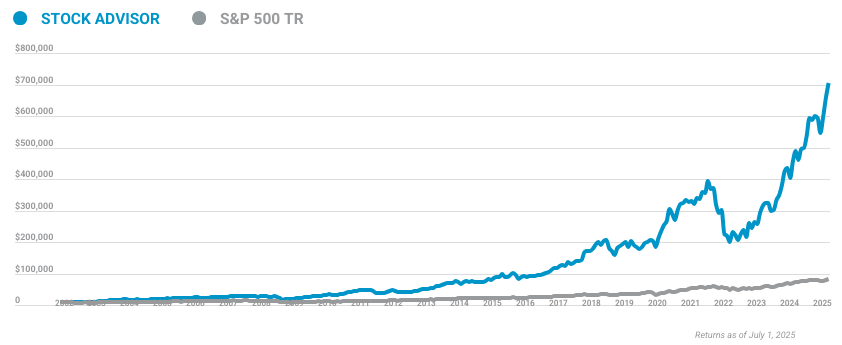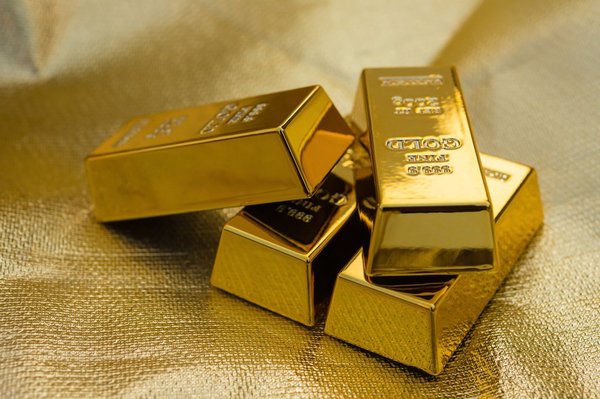Gold stocks are publicly traded investments focused on gold. The industry consists of the following types of entities:
- Mining companies: These companies explore gold resources, develop mines, and sell gold and other metals.
- Gold-focused exchange-traded funds (ETFs): These funds own physical gold or shares of several gold mining companies.
- Gold streaming and royalty companies: These companies pay up-front fees to mining companies in exchange for:
- A percentage of the mine’s revenue, e.g., a mining royalty.
- The right to purchase the future production of a specific metal at a certain mine for a fixed price, e.g., a mining stream.

Gold is a safe-haven metal. Investors buy gold to hedge against risks such as rising inflation, geopolitical events, and financial crises. These factors can cause the price of gold to be volatile.
That was the case in 2022 and early 2023. Gold has rallied over the past year to more than $2,000 an ounce as of early 2023, driven by inflationary and geopolitical concerns. However, there has been a lot of pricing volatility as investors weighed a potential recession with rising interest rates, inflation, and other factors.
There are many benefits to buying gold stocks instead of the physical metal to reap the potential rewards of investing in gold. Gold companies can potentially generate higher total returns than an investment in physical gold. That’s because these companies can expand their production and reduce costs. Those factors can help gold mining companies grow their profits. Rising earnings can help drive stock prices up faster than the price of gold.
However, not all gold stocks outperform gold itself. Investors need to carefully choose the best gold stocks to buy.
Top gold stocks
Top gold mining stocks
Dozens of companies focus on mining gold, giving investors lots of options. Here are the top gold stocks to buy in 2023:
| Gold Stock | Description |
|---|---|
| Barrick Gold (NYSE:GOLD) | One of the world's largest gold mining companies. |
| Franco-Nevada (NYSE:FNV) | A leading gold-focused royalty and streaming company. |
| VanEck Vectors Gold Miners ETF (NYSEMKT:GDX) | A gold ETF that holds shares of several large gold mining stocks. |
1. Barrick Gold Corporation
1. Barrick Gold Corporation
Barrick Gold is striving to be the most valuable gold mining company in the world. The Canada-based company focuses on operating Tier One mining assets, which Barrick defines as those with:
- The ability to produce more than 500,000 ounces of gold per year.
- At least 10 years of productive life remaining.
- Low-cost operations, as defined by total costs per ounce.
By focusing on operating large mines with significant remaining resources, Barrick can produce gold at a relatively steady pace for years. The company expects to produce an average of roughly 6.5 million ounces of gold equivalent (which includes its copper output) annually through 2032.
Barrick complements its top-tier gold mining portfolio with a strong balance sheet. It has focused on paying down debt over the past several years through free cash flow and the sale of noncore assets. As a result, the company had a net cash balance as of early 2023, giving it the financial flexibility and strength to repurchase shares and pay an attractive dividend. The company pays a base dividend and a performance dividend, with the latter based on the amount of cash it has on its balance sheet at the end of each quarter.
2. Franco-Nevada Corporation
2. Franco-Nevada Corporation
Franco-Nevada is a Canada-based streaming and royalty company. It has a diversified portfolio, with agreements tied to gold, silver, the platinum group metals (PGMs), iron ore, and oil and gas. In 2022, 55% of its revenue came from gold.
A major benefit of Franco-Nevada's focus on royalties and streaming is that it reduces risk. It doesn’t face the capital and operating cost overruns that have historically plagued mining companies. At the same time, Franco-Nevada’s agreements position it to profit as its mining partners complete exploration and expansion projects.
Franco-Nevada's streaming and royalty contracts provide it with the ability to generate lots of cash by selling the physical commodities it receives. That cash flow enables it to invest in new deals and pay a dividend.
Franco-Nevada has increased its dividend each year since its initial public offering (IPO) in 2008, hitting a milestone of 16 consecutive years in 2023. The company also boasts a debt-free balance sheet -- a rarity in the mining industry -- giving it even more financial flexibility to invest in new royalty and streaming agreements.
Because Franco-Nevada can profit from gold mining without exposure to the risks of mine development, its stock has historically outperformed the price of gold and other gold mining stocks. All of these factors make it an ideal gold stock investment.
Also, for those interested in ESG factors, the company said in its 2022 asset handbook that it has a goal of achieving 40% diverse representation between the board and senior management as a group by 2025. As The Motley Fool Co-Founder David Gardner says, "Invest for the world you want to see."
3. VanEck Vectors Gold Miners ETF
3. VanEck Vectors Gold Miners ETF
The VanEck Vectors Gold Miners ETF holds the stocks of large gold mining companies. It’s one of the largest gold ETFs, with about $14.8 billion in assets as of early 2023, when the ETF held shares in 48 gold mining companies. VanEck's top five holdings by value were:
- Newmont Corporation (NEM -1.57%)
- Barrick Gold Corporation (GOLD 0.06%)
- Franco-Nevada Corporation (FNV 1.13%)
- Agnico Eagle Mines (AEM 0.89%)
- Wheaton Precious Metals (WPM 0.5%)
The five gold stocks made up almost 39% of the ETF’s assets, with Newmont accounting for more than 10%. The gold stocks have market capitalizations ranging from Newmont's $41 billion to Wheaton Precious Metals’ $22 billion.
With the exception of Wheaton and Franco-Nevada, these top holdings are the world's largest gold mining companies. Agnico vaulted up the list in 2022 by completing its merger with fellow gold miner Kirkland Lake Gold. It further expanded its scale in 2023 by acquiring Yamana Gold's Canadian assets as part of Pan American Silver's (PAA -1.11%) acquisition of that company. Franco-Nevada and Wheaton are the leading gold streaming and royalty companies.
The gold ETF enables investors to easily own a diverse, high-quality group of large-scale gold companies. The ETF also has a reasonable expense ratio of 0.51%, making it a relatively cost-effective way to invest in many gold stocks.
Related Investing Topics
Picking the best gold stocks
Many factors affect the price of gold, including monetary policy and inflation. For years, gold was the top choice of investors seeking to hedge against these risks. However, cryptocurrencies could cause gold and other precious metals to lose their luster, an emerging risk that investors need to monitor.
That aside, one of the best ways to invest in the gold market is through gold mining companies. They benefit from rising gold prices, as well as their ability to increase production and reduce costs. Consequently, top gold mining companies can often outperform the price of gold. The top-tier gold miners have low cost structures, manageable debt levels, and limited exposure to risky mining projects.
Meanwhile, gold streaming companies generally offer the best risk-reward potential among gold-focused investment options. They are well positioned to benefit from higher gold prices without assuming the risks associated with mining physical gold.
Finally, investors who don’t want to try to identify the best individual gold mining stocks can consider buying shares in gold ETFs, which are more convenient and cost-effective options for investing in gold stocks. A gold ETF offers broad exposure to the sector by owning either shares of gold mining companies or physical gold. Because of the wide availability of gold ETFs, you don't have to be a stock-picking guru to participate in the gold industry's upside.
FAQ
Frequently asked questions about investing in gold stocks
1) Is a gold stock a good long-term investment?
Gold stocks can be good long-term investments. For example, Franco-Nevada has outperformed the price of gold and the broader stock market over the long term. However, not all gold stocks can deliver attractive investment returns due to the risks associated with mining, so investors need to choose their gold stock investments wisely.
2) Should I keep cash or gold?
The decision to keep cash or gold is a personal preference based on your beliefs about inflation, the economy, and the money supply. Over the last decade, gold has outperformed cash. According to data from Bankrate.com, the average annual return on gold has been 0.8%. Meanwhile, the average annual return on cash as measured by one-year CDs was 0.4%. However, despite being known as an inflation hedge, it hasn't performed as well as expected in recent years.
3) What reasons are there not to invest in gold?
While there are many positive reasons to invest in gold, there are also several cons. These include the possibility of the price of gold falling; it's not always a great hedge against inflation or macroeconomic headwinds; and it can underperform stocks over the long term. Meanwhile, there are risks and costs associated with owning physical gold (e.g., insurance or theft). Investing in gold isn't for everyone. You should firmly believe that gold prices will rise before investing in gold.









